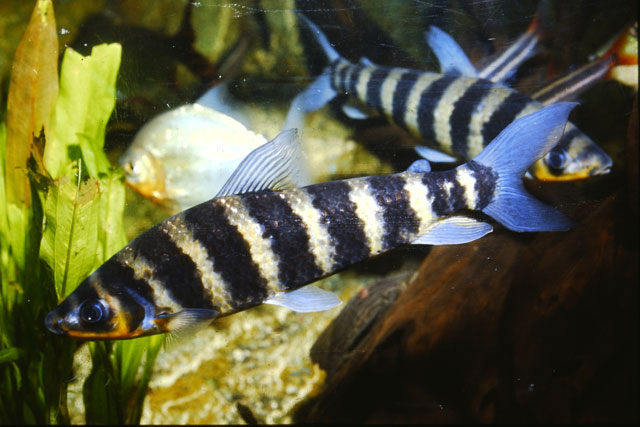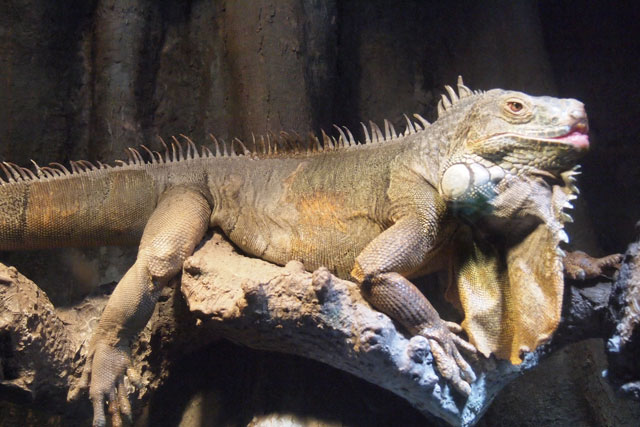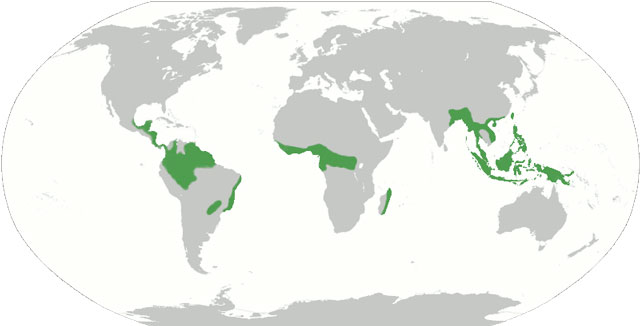Grand River – The Amazon ―
<<back | next>>
The Amazon River is the largest river in the world by discharge of water. It has many tributaries and pours into the Atlantic Ocean. The water of these tributaries vary in color and quality, which contributes to creating diverse underwater environments through the Amazon River, inhabited by over 2,500 different kinds of fish and other creatures.
Creatures Living in the Amazon River

Banded leporinus
Range: Orinoco River, La Plata River
Young Banded leporinus’have five bands while adults have ten. The number of bands increases to 8 to up to 10 as they grow. They are omnivorous and mild-mannered, but sometimes bite fins of other fish.

Redhook metynnis
Range: Throughout the Amazon River
The Redhook metynnis can grow up to 20cm in length and live in large schools. They are often confused with piranhas Piranhas by its appearance, but they are omnivorous and feed mainly on aquatic plants.

Green iguana
Range: Rain forests from Central to South America, and West Indies
The Green iguana is a large lizard that can grow up to 1.8 meters in length, although the majority of its length is due to the long tail. When attacked by other animals, they use their tails to fight back. They are also good swimmers, thanks to the tail.
Why Rainforests Are So Important to Us?
The rainforest that spreads along with the Amazon River is the biggest rainforest in the world and called the “lungs of the earth”, because it continuously absorbs a large amount of carbo dioxide in the air and release oxygen back into the air.
The three forests spreading in the tropic region in Latin America, Southeast Asia, and Central Africa are the top three biggest rainforests in the world. The amount of oxygen released by these three rainforests consists up to 40% of the total amount of oxygen released by all plants on Earth.
Generating oxygen is not the only benefit that they provide us with. Trees’ roots also retain soil, preventing it from pouring into rivers; Without trees, soil would pour into rivers, which would then make the water muddy. The muddy water would then pour into the ocean and blocks sunlight, which is indispensable for corals to survive. If corals die, sea creatures living there would lose their home. This way, nature is the one and indivisible.

